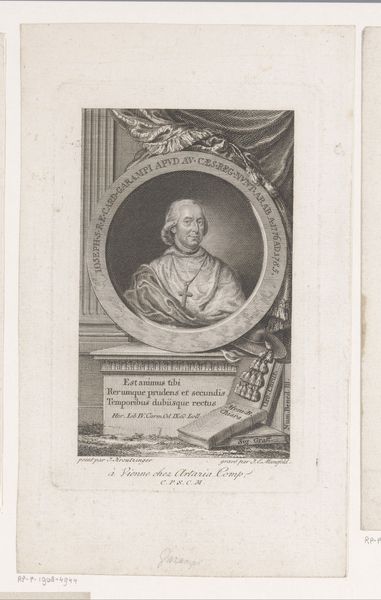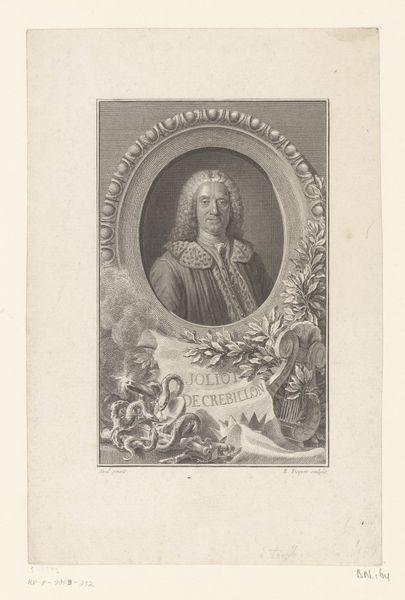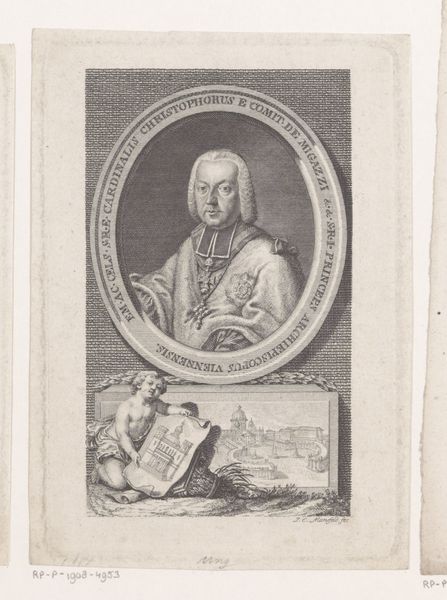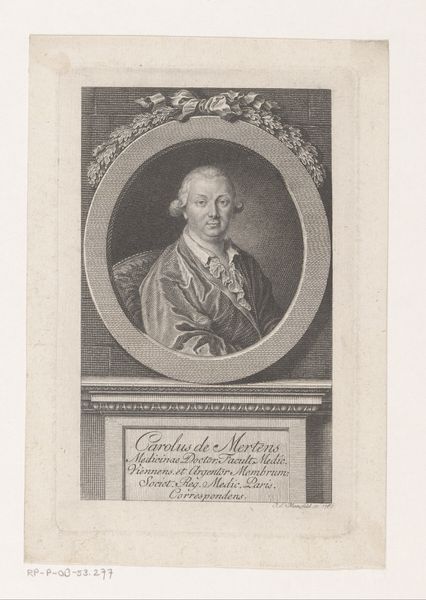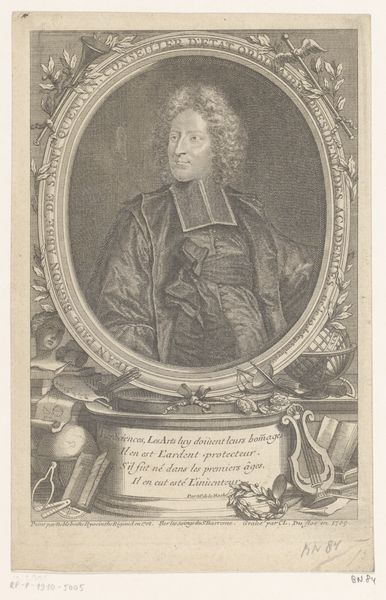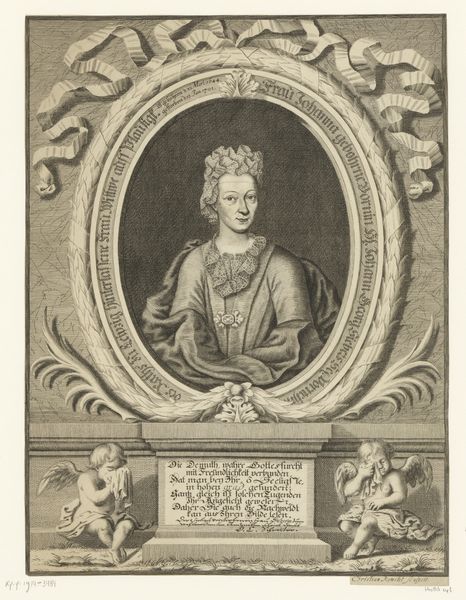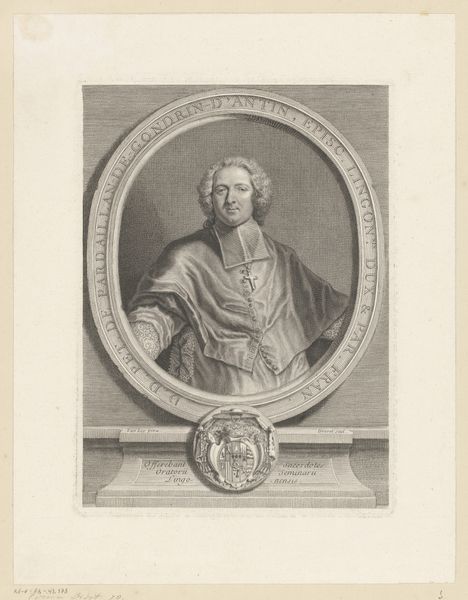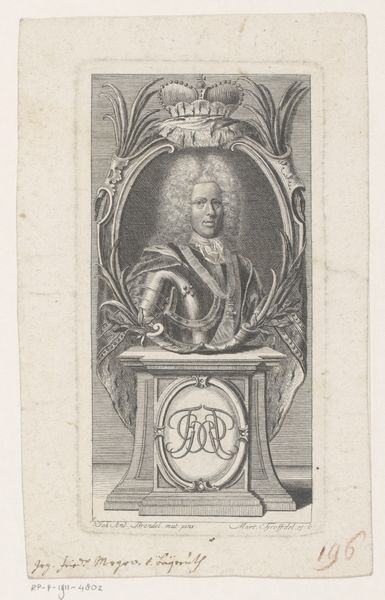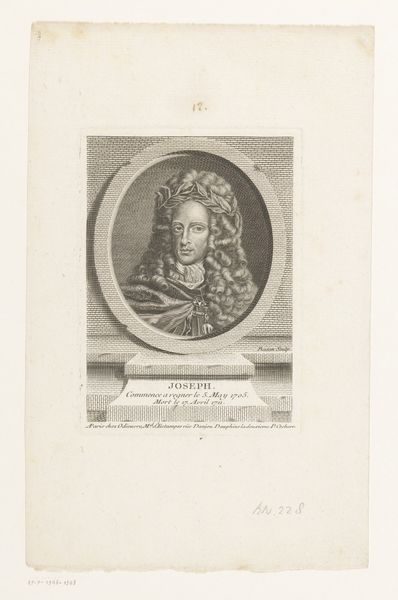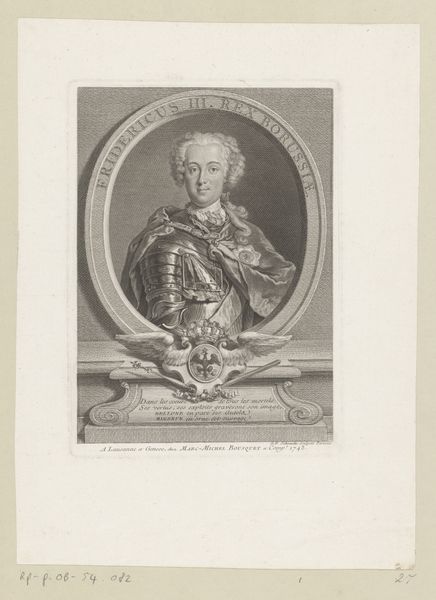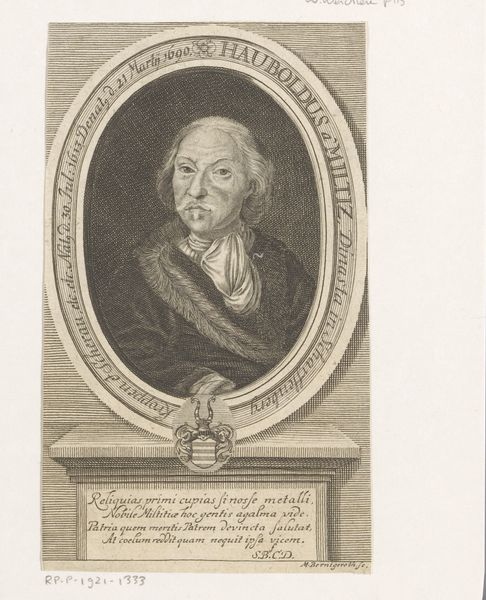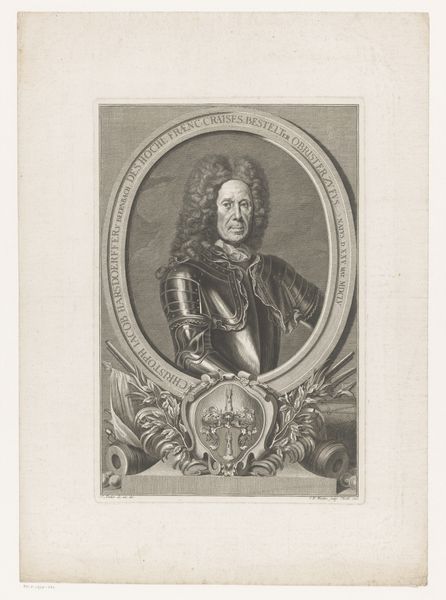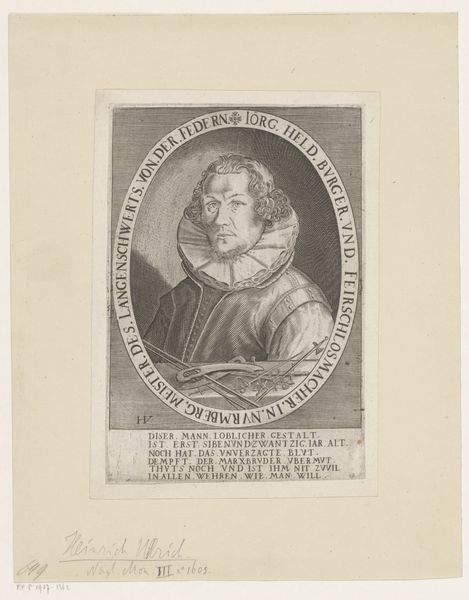
Dimensions: height 151 mm, width 97 mm
Copyright: Rijks Museum: Open Domain
Curator: Welcome. We’re standing before an engraving crafted between 1749 and 1796, titled “Portret van Wolfgang Christoph von Uiberacker.” The artist is Johann Ernst Mansfeld. Editor: Well, the first thing I notice is how contained it feels, like peering into someone's memory. The stark contrasts, the detailed cross-hatching...it gives a sense of both power and melancholic distance. Curator: Yes, the medium really dictates the aesthetic. Note how Mansfeld uses varied densities of lines to sculpt form, building tonal gradations that define the subject’s face and drapery. Observe the architectural backdrop and the heraldic shield; they function almost as compositional anchors. Editor: Anchors, absolutely, yet also these fleeting details almost dissolving into the background. That ornate cartouche below the portrait looks like a page torn from a very serious fairytale! The subject's expression – he seems caught between eras. Is he amused, burdened, or simply indifferent? Curator: Such ambiguity is characteristic of portraiture during this period. We could delve into iconographic analysis – the wreath circling his portrait, perhaps symbolic of honor or achievement. The book he holds… a marker of status. Editor: Or a sign of a secret yearning! Honestly, there’s an undeniable theatrical quality, don't you think? A person posed, ready for their moment, perhaps in front of an audience that isn't quite present anymore. Curator: Interesting observation. Considering the graphic quality and intended reproducibility, maybe that absent audience was envisioned for circulation beyond immediate spectators. The artwork would have had to capture the essential dignity of the subject but do so via the most universally communicable visual strategies. Editor: Universal but deeply personal, perhaps, if you think of each viewer bringing themselves into it. You know, even in a black and white rendering, I find a weird comfort within the gradations, as if I’m discovering shades of something long gone. It brings it close to the current moment. Curator: A print, after all, facilitates multiplicity; this work's intrinsic worth evolves over time because of its varied context-dependent meanings, thus eluding total contextualization. Editor: It’s interesting to think of it as never settling, but instead endlessly recreating its existence with new viewers.
Comments
No comments
Be the first to comment and join the conversation on the ultimate creative platform.
